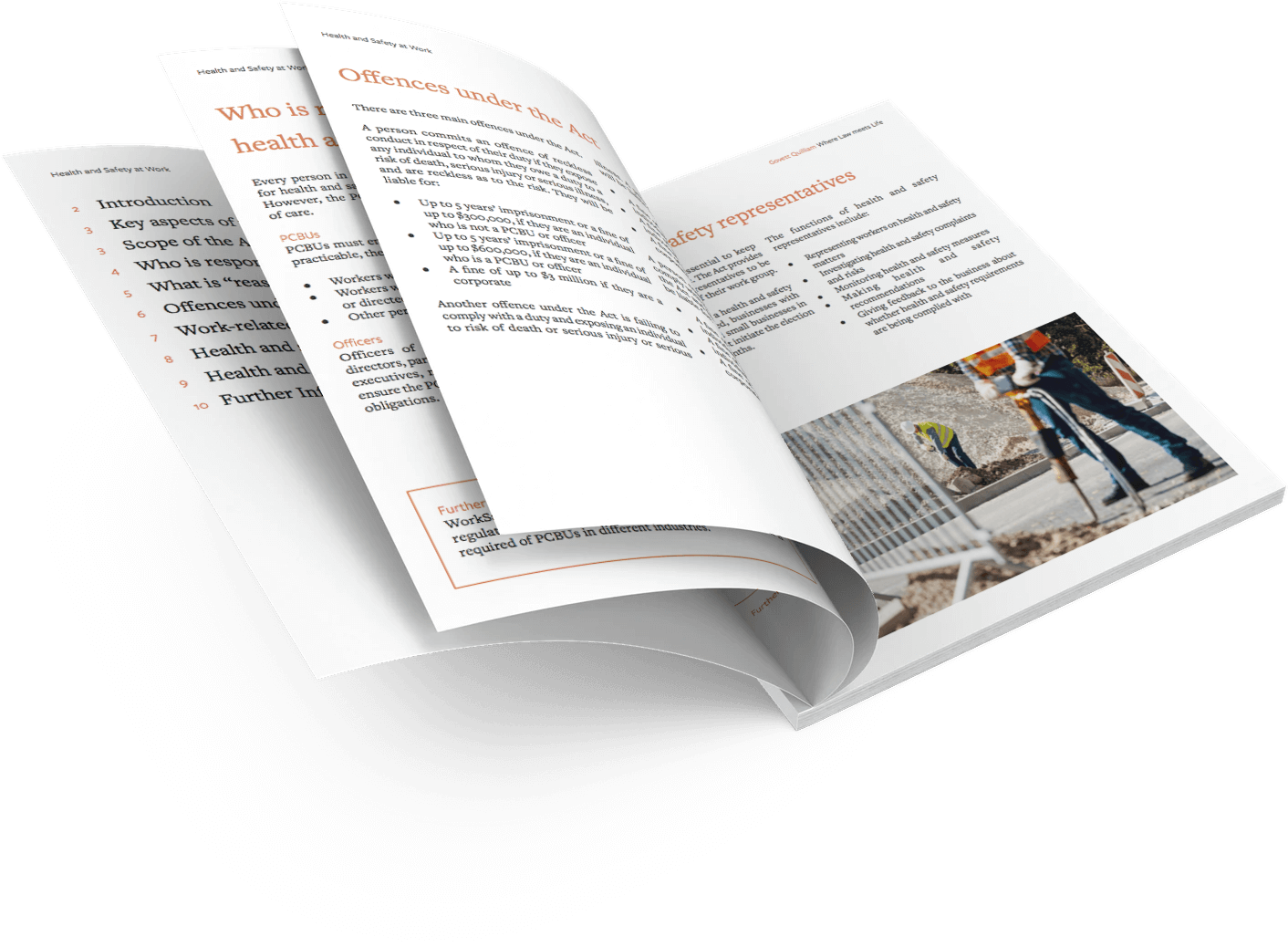
The Supreme Court decision ordered that Mainzeal’s former directors contribute a total of $39.8 million, plus interest, to the company’s assets, for breaches of the Act.
The recent Supreme Court decision in Yan v Mainzeal Property and Construction Limited (in liquidation) & Others [2023] NZSC 113 (Mainzeal) provides welcome guidance to directors on their potential liability under sections 135 and 136 of the Companies Act 2006 (Act).
Sections 135 and 136 relate to scenarios where companies continue to trade and incur obligations in circumstances where they are insolvent or their solvency is questionable. The Supreme Court has emphasised that these provisions are focused on the protection of creditors, and that the directors must therefore have (at least substantial) regard to creditors’ interests where a company is insolvent, or near insolvent.
Ultimately, the Supreme Court ordered that Mainzeal’s former directors contribute a total of $39.8 million, plus interest, to the company’s assets[1], for breaches of the Act.
This article focusses on the Court’s findings in relation to the directors’ liability on sections 135 and 136 of the Act.
Background
Mainzeal was one of New Zealand’s largest construction companies, until it entered liquidation in early 2013.
The Supreme Court noted that Mainzeal had traded in a difficult industry, while balance sheet insolvent from 2005. From at least 2008 Mainzeal was, at best, generating limited operating profits but more usually losses, while its directors permitted it to continue trading, on the basis of assurances of support from associated companies.
The law
Section 135 of the Act relates to reckless trading and provides that a director must not agree to the business of a company being carried on in a manner likely to cause substantial risk of loss to that company’s creditors; or to cause or allow the business of a company being carried on in such a manner.
Section 136 of the Act relates to a director’s duty in relation to a company incurring obligations and provides that a director must not agree to the company incurring an obligation unless the director believes at that time, on reasonable ground, that the company will be able to perform the obligation when it is required to do so.
The decision
Section 135
The Court confirmed that the purpose of section 135 when enacted was to ensure that directors consider the interests of creditors of a company, where that company’s solvency is doubtful.
Specifically, the court has said that section 135 was enacted on the premise that it is undesirable for a company to trade on in circumstances in which those who deal with it in the future are exposed to substantial risk of serious loss, irrespective of whether that trading may confer benefits on a company’s existing creditors.
The Court has provided the following guidance for analysing whether a director has breached their duties under section 135:
- An objective approach must be taken when determining whether the business of the company was carried on in the prohibited manner;
- When assessing the actions of the directors in agreeing to, causing or allowing trading in breach of section 135, the court will proceed on the basis of those facts and circumstances which the directors were aware of, or should have been aware of if exercising the appropriate level of care, skill and diligence;
- What is an appropriate level of care, skill and diligence will depend on the complexity of the company.
The Court found that the directors of Mainzeal were liable under section 135, based on the following facts:
- Mainzeal had been balance sheet insolvent since 2005 (as the loans it had made to related parties, were never likely to be repaid[2]);
- From 2008, Mainzeal generated little (if any) operating profit;
- A 2008 assessment by PwC found that additional capital was required, but none was forthcoming;
- Letters of support made after a 2009 restructuring came from a related company which did not own assets to make good on its assurances;
- From 2009, Mainzeal began to face leaky building claims, and these claims posed a substantial risk to Mainzeal’s solvency;
- The directors were well aware of all of these facts;
- While the directors took some steps to address these problems, those steps were not sufficient;
- While trading projections did show a profitable path forward, that was in the context of a history of trading projections not being met and of minimal profits, but more usually losses;
- Mainzeal was operating on a large turnover, but with limited margins; and
- It was not reasonable for the directors to rely on the assurances of support from associated companies, or their fellow director, Mr Yan.
Section 136
The Court considered that whereas section 135 is focused on the interests of creditors, section 136 is focused on the interest of particular creditors.
The court considered that this section means that directors ought not to commit a company to obligations unless confident on reasonable grounds that they will be honoured.
The court found (because of the factual findings in relation to section 135) that after 30 January 2011, the directors did not have reasonable grounds to believe that Mainzeal would be able to pay its debts in the medium to long term. Therefore, when the directors agreed to entering into obligations in relation to four major projects after that date, they had no reasonable grounds to believe that those obligations would be honoured.
The Court also considered that the directors were liable for all obligations incurred by Mainzeal after 5 July 2012, for the following reasons:
- Mainzeal’s acute cashflow difficulties from June 2012;
- Legacy claims; and
- Insufficiency of capital.
Key takeaways for directors
Directors have a continuing obligation to monitor the performance and prospects of their company, failure to do so will result in a breach of the directors’ obligations to exercise the care, diligence and skill of a reasonable director.
If this monitoring reveals that a company’s solvency status gives rise to: (i) potential for substantial risk of serious loss to creditors; or (ii) doubt as to where there is a continuing reasonable basis for the belief that obligations incurred will be honoured, company’s directors should squarely address the future of the company.
If there is potential for the substantial risk of loss to a company’s creditors or doubt as to whether there is a reasonable basis for belief that new obligations will be honoured, the directors must decided how liability for potential breaches of ss135 and 136 can be avoided. To do this, directors must seek professional advice from sources independent of the company. The court’s will allow a reasonable period of time in which to do so, and for the directors to decide what course of action they will take.
In deciding what to do, directors should:
- Deal directly with the issues;
- Determine whether the risks can be eliminated or sufficiently managed and mitigated under a plan for continued trading that offers a reasonable basis for concluding that:
- There is not a substantial risk of loss to creditors; and
- They can be confident that obligations incurred will be honoured.
Principles of sound corporate governance should be adhered to in terms of developing a strategy for continued trading (if this is what’s decided), and monitoring progress.
Overall, directors should recognise that a long term strategy of trading while balance sheet insolvent is generally not acceptable.
[1] Although the liability of three of the directors was limited to $6.6m.
[2] This was explicitly referenced in board papers from January 2010.
Author: Heather Froude
Heather Froude is an Associate in our Resource Management, Litigation and Employment Teams.






.png)

